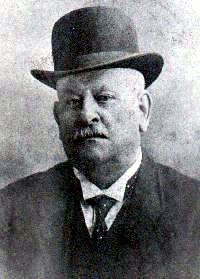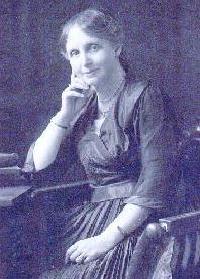|
THE ORIGINS of the town council date back to the late 19th century when Bourne was governed in its local affairs by vestry or parochial meetings with the courts of its two manors of Bourne and Bourne Abbots still active and exercising rights over their respective properties. The Local Government Act of 1894 provided for the establishment of urban district councils and it was as a result of this legislation that local government as we know it today began.
Bourne Urban District Council came into being in 1899 with jurisdiction over an area that included the village of Twenty together with Dyke and Cawthorpe that had always been within the old parish of Bourne. The first chairman was Mr
John Baxter Shilcock (1899-1900), whose family were in business as millers and
maltsters and owners of the Star Brewery that supplied many local public houses with their ale. He headed the council again in 1921-22 and other past chairmen have included Thomas William Mays, the father of the motor racing pioneer Raymond Mays, who was chairman four times in successive years from 1904 until 1908, Mrs Caroline Galletly who was the council's first woman chairman (1930-31) and her son Dr Alistair Galletly (1961-62).
The council had a wide range of responsibilities including community services, public health and even the fire brigade. The success of the town through expansion was a particular aspect of its work and during the early years of the 20th century, one of their main aims was to attract light industry and their efforts met with some success and laid the foundations of the business community that we have today. Housing was one of its major activities and the urban district council was responsible for the increase in council housing between the two world wars of the 20th century when the population of the town doubled. New streets were added to keep pace with the demand for accommodation and it was during this period that many council estates such as Recreation Road, Harrington Street, Queen's Road and Edinburgh Crescent were built. The original council chamber was in the old Corn Exchange in Abbey Road but the offices were later moved to the Town Hall. The council was granted its own coat of arms on 23rd July 1953 in the archaic terms of the College of Arms:
The shield is a modification of the arms of the Wake family who were Lords of the Manor from 1166 until the 14th century and are not to be confused with Hereward the Wake, whose exploits are the subject of many fictional tales. The three red roundels in gold remain and the characteristic Wake knot is depicted in the base of the shield. The two red bars from the Wake arms are replaced by a single broad blue one charged with a navy white one, representing two waterways, the Bourne Eau and the Car Dyke. Above the shield is the closed helm granted to civic authorities and this is furnished with the twisted crest wreath and slashed oak or mantlings in the main colours of the arms, gold and blue. The red battlements represent the castle, the ermine lion is from the arms of the Cecils who have owned the market rights in Bourne since 1564 and from which family came the first Lord Burghley, while the lion holds a shield of arms of the Digby family who once lived at the Red Hall. The motto included within a scroll at the base is Vigila et Ora, or Watch and Pray, which is also used by Bourne Grammar and the Abbey Primary Schools. A public subscription list was opened in 1953 to purchase suitable civic regalia for the council and a jewel incorporating the coat of arms was obtained together with a chain of office in 1955 to be worn by the chairman of the council on official occasions and a tapestry of the coat of arms was hung in the council chamber. Bourne Urban District Council continued to administer local affairs until April 1974 when it was disbanded under the local government re-organisation after a period of 75 years. The final meeting of the council was held in the Town Hall on 12th March 1974 when apart from dealing with routine matters of business, councillors heard from the various committee chairmen giving a resume of work done in the recent past and then members, together with their wives, husbands and officials, posed for a farewell photograph. All urban authorities in England were replaced at this time by district councils and henceforth, Bourne's affairs came under the control of South Kesteven District Council based in Grantham but the town retained a parish council which, because of its historic status, was given special dispensation to become a town council with a chairman who is also the mayor and this authority took over the Coat of Arms and civic regalia. For a short time, the new council held its meetings at the Red Hall but it was later decided to hold them at Wake House where the district council had its offices. Meetings continued there until 1993 when they were transferred to the Town Hall and then to the new Community Access Point at the Corn Exchange when it opened in March 2013. The present town council has 15 members and retains the old committee structure but administers a budget of £165,000 a year. It does have an input into planning applications and other matters under consideration by the district and county councils but is in effect a token authority with few powers apart from the control of the cemetery, the town's allotments and the Christmas lights, but is regularly consulted on the choice of street names on new developments. Over the years however, some councillors have gone on to serve with distinction on the district and county councils.
|

